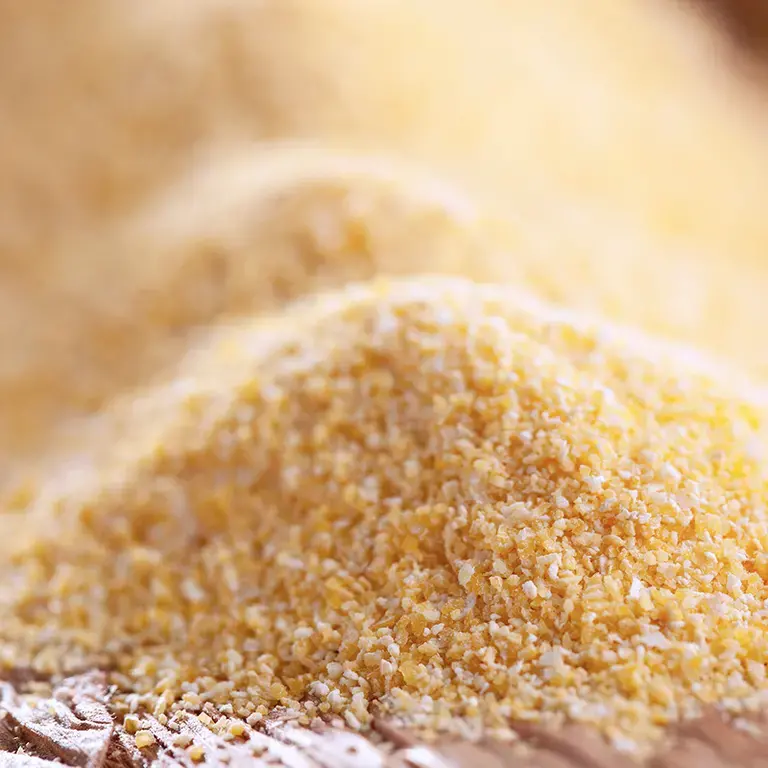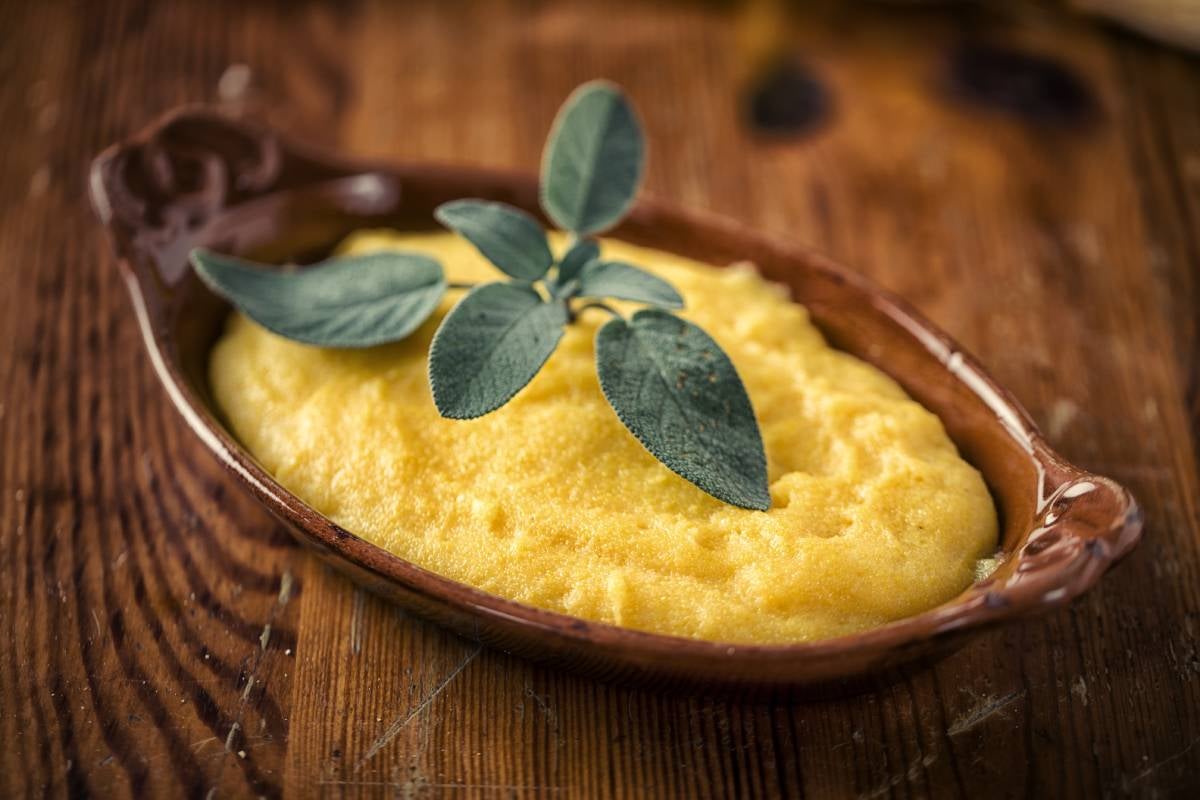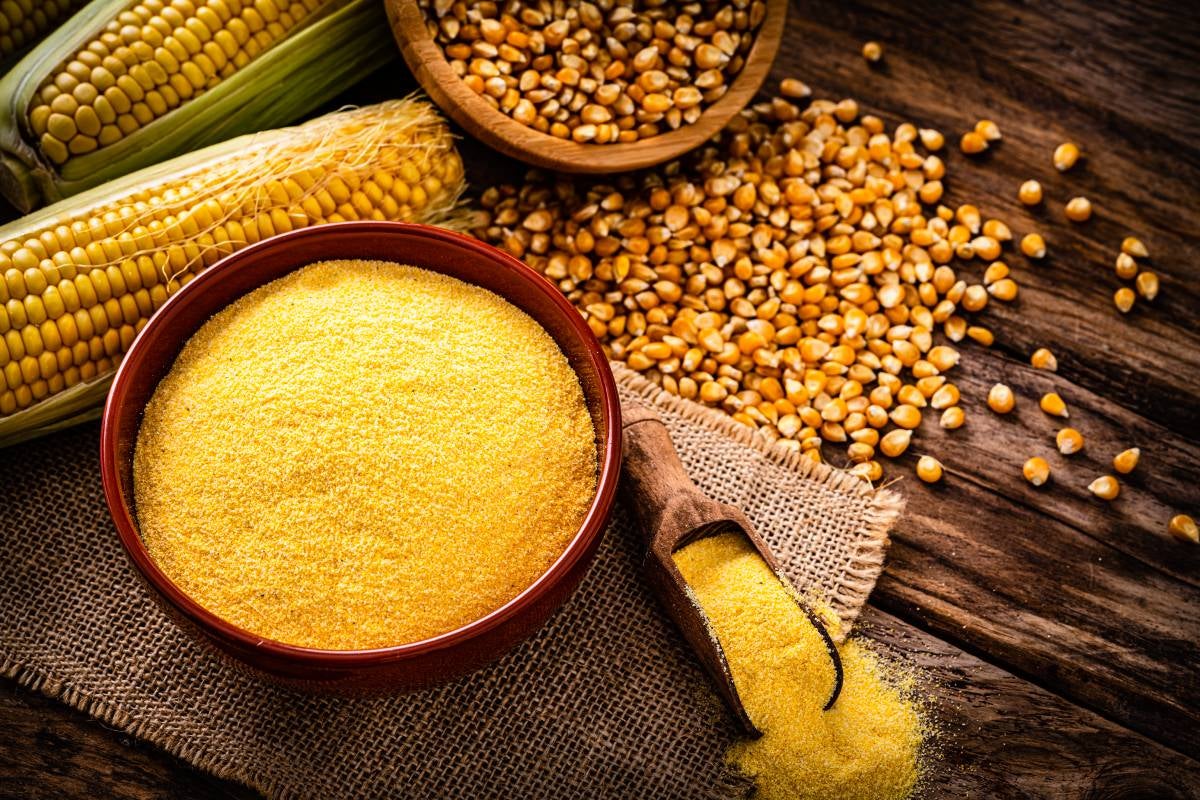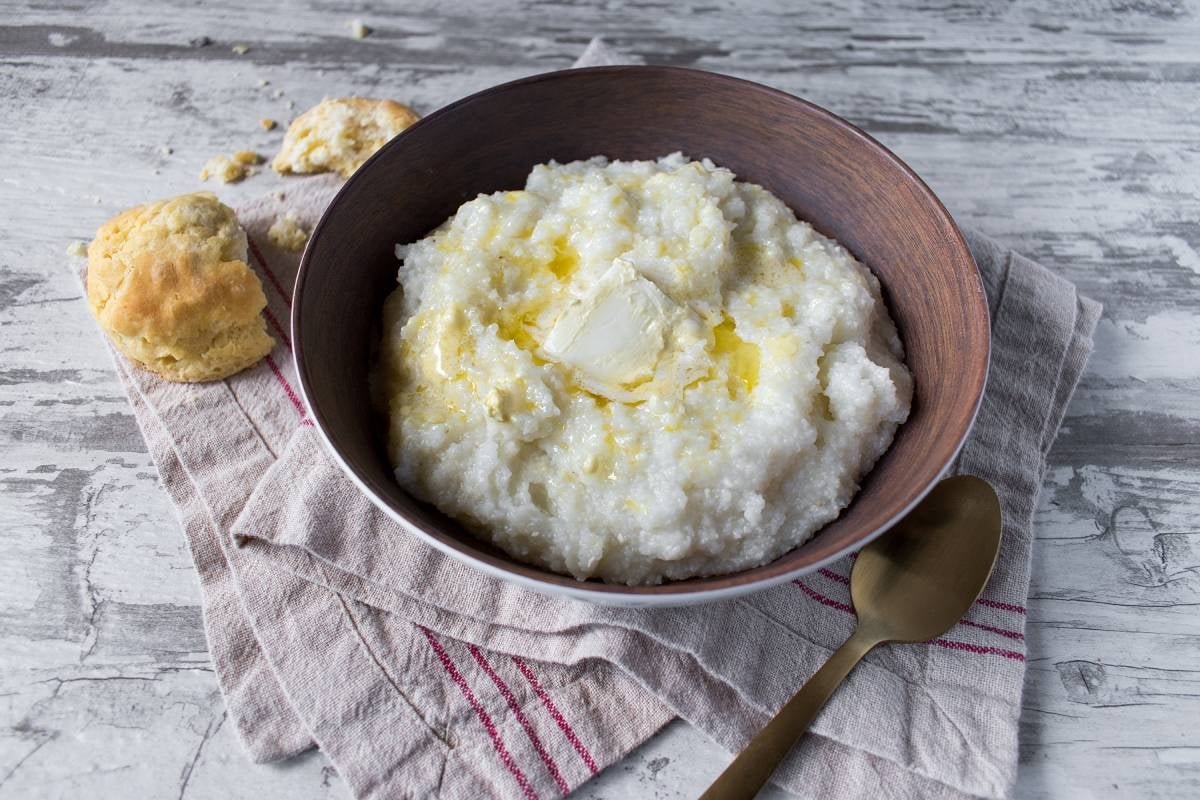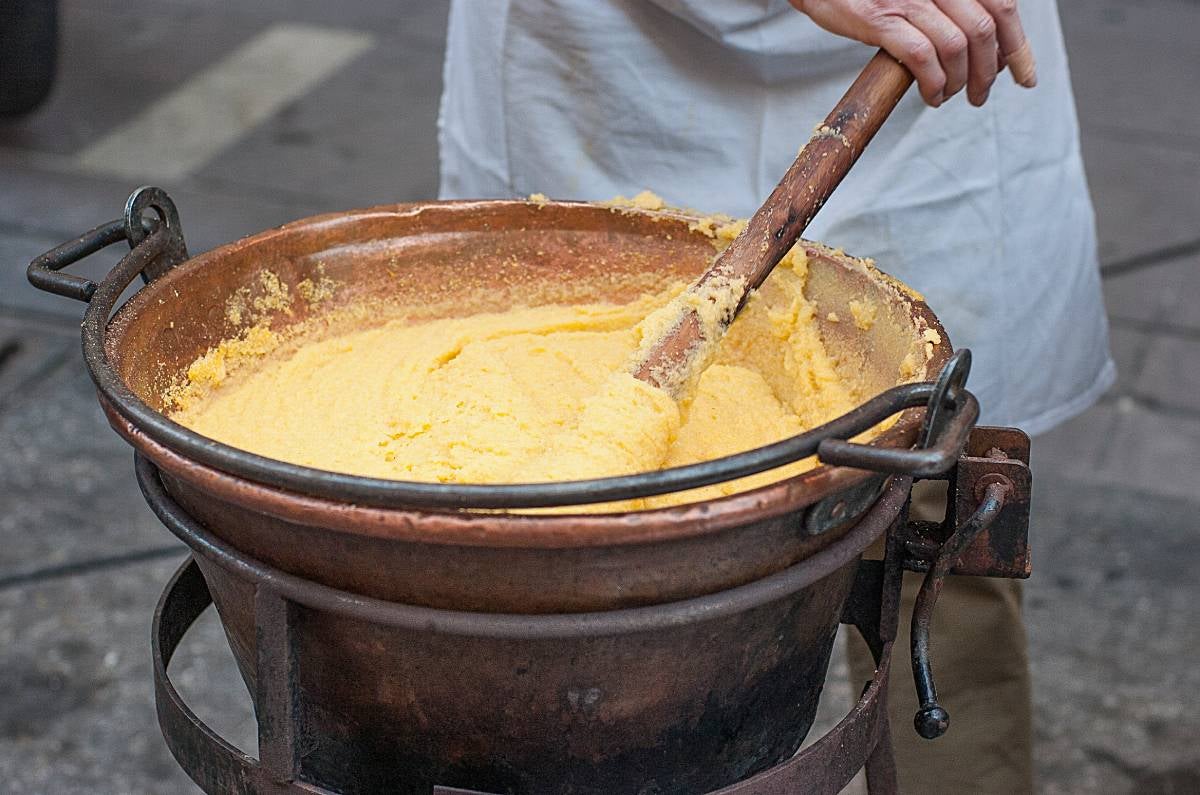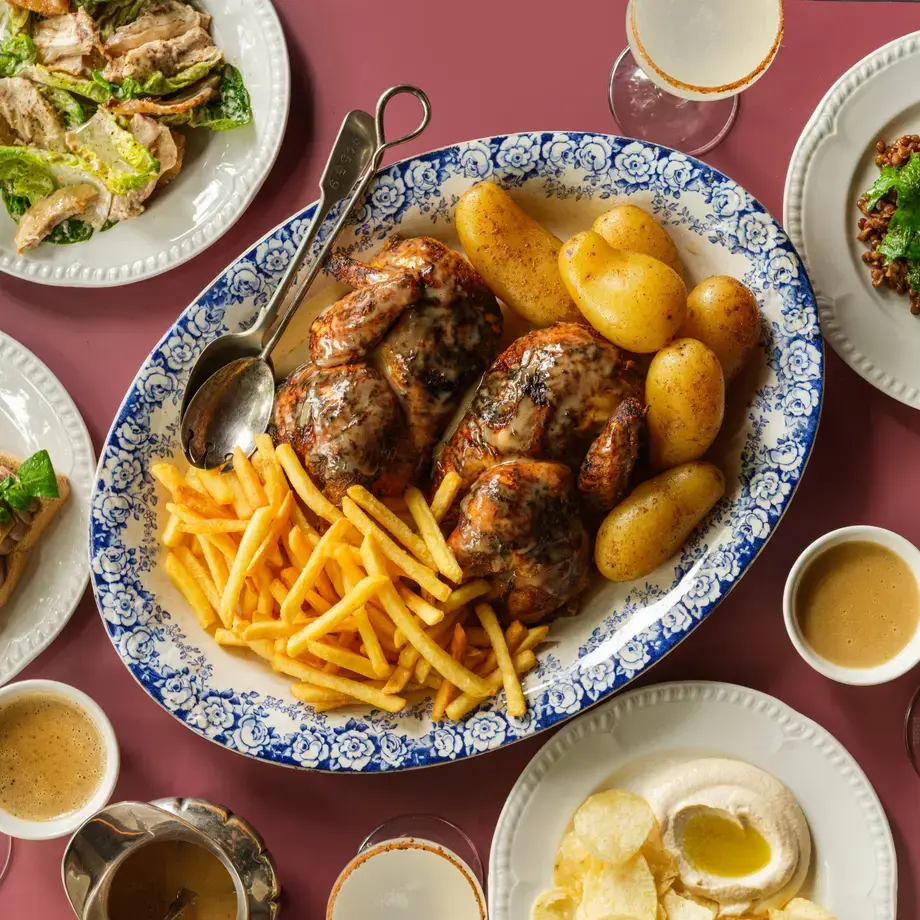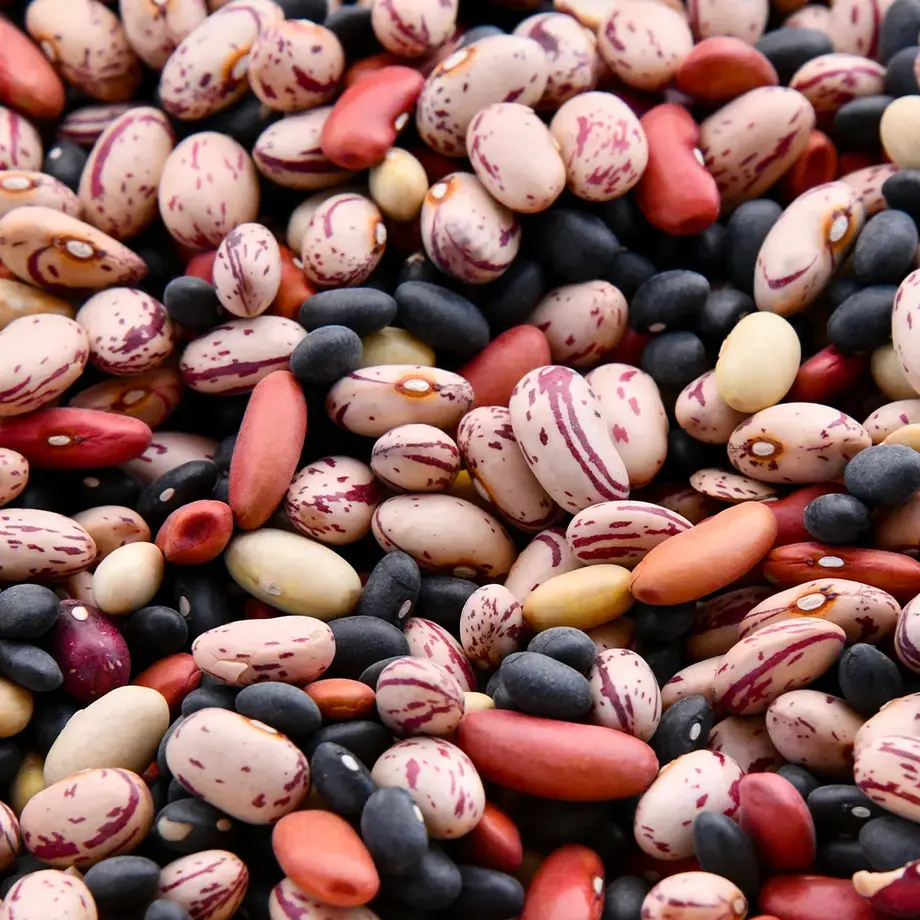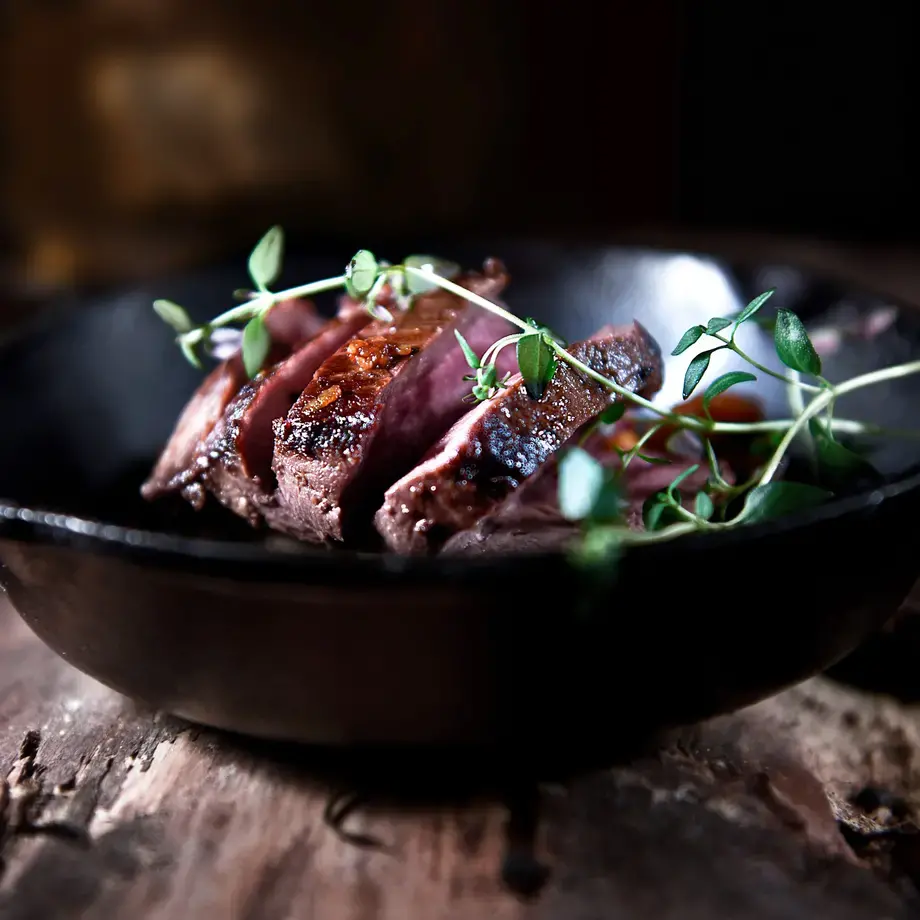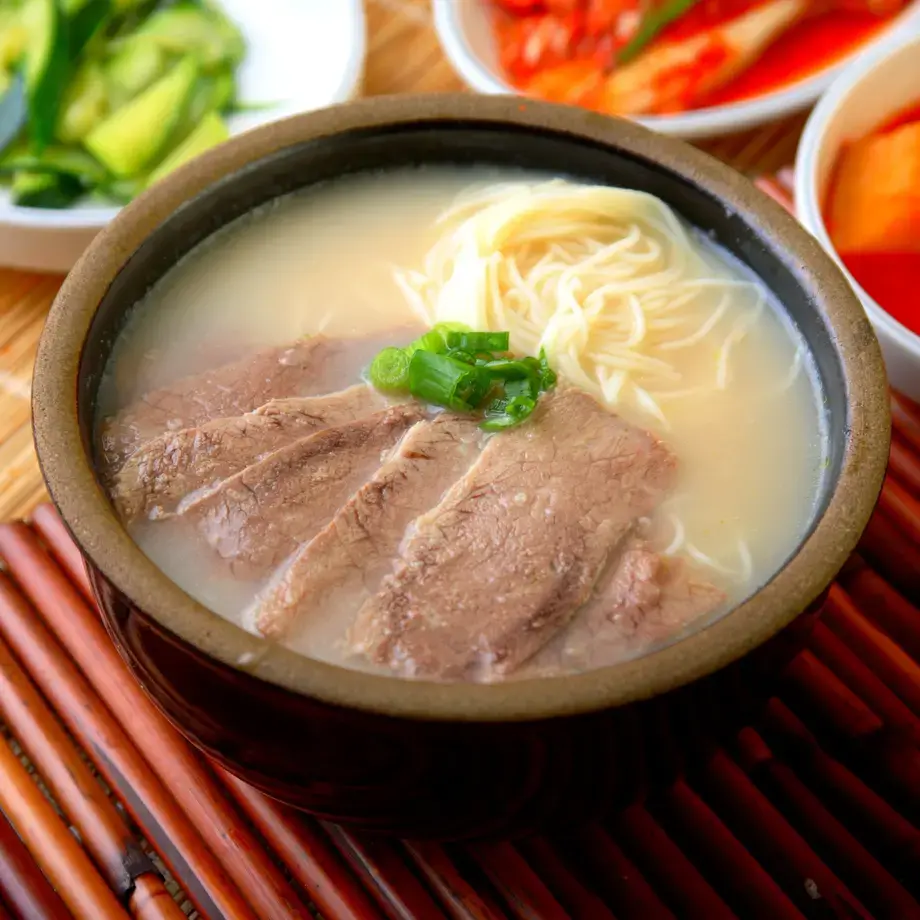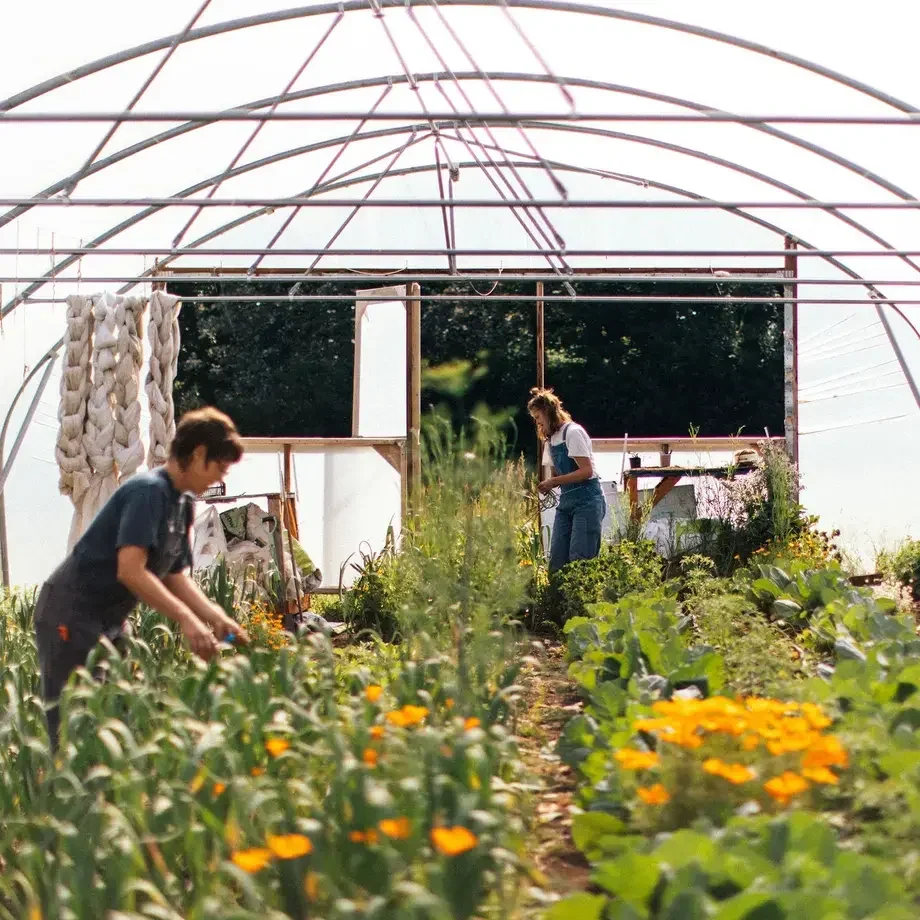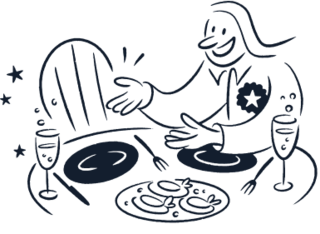Discover the nuances of cornmeal, grits, and polenta, including the distinct characteristics of each and how to prepare them to perfection.
Traditionally, polenta is slow-cooked in water until the grains swell and the starches are released. Towards the end of the preparation, it’s combined with other ingredients, from butter and cheese to sauces and gravies. At this point, the dish has a thick, smooth consistency and is ready to be eaten. It can be topped with any number of ingredients. Ragoût is a classic, but polenta is also delicious when served with mushrooms or roasted vegetables. Or, just eat it on its own, as a creamy porridge. Once cooled or chilled, the polenta hardens and can be cut into pieces and crisped up on the outside. Check out our 10 creative ways to jazz up your polenta, from crunchy coatings to tasty pizzas and cakes to delicious desserts.
How to cook cornmeal
Cornmeal, a traditional ingredient in cornbread, offers more than just texture and sweetness to cookies. It can be used to dust baking surfaces to prevent the dough from sticking, as well as a thickener for soups and chilis. It is an incredibly versatile ingredient you can turn into virtually anything. Check out our 12 tasty ideas for cooking with cornmeal to create spectacular recipes that are sure to please.
How to cook grits
While finding white corn flakes – the main ingredient in grits – may be challenging, the dish is easy to prepare. If you can't find them, you can replace them with corn flour used for making polenta. Check out our step-by-step recipe for grits.
